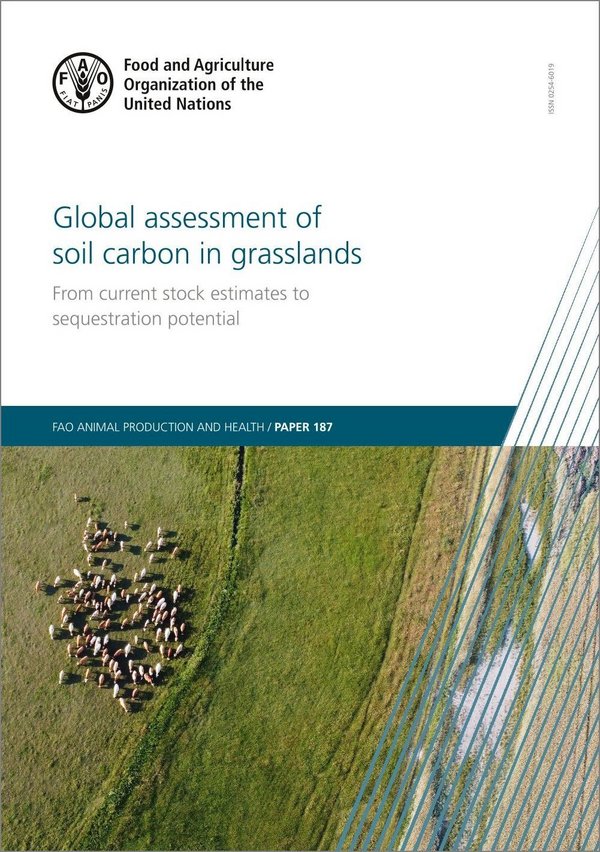- Share this article
- Subscribe to our newsletter
Soil carbon in grasslands
Improving management practices in grasslands – large areas covered with grass, especially used for animal grazing – can boost the capacity of soils as carbon sinks, and help countries reach their climate goals. This is the conclusion of the Global assessment of soil carbon in grasslands, published by the Food and Agriculture Organization of the United Nations (FAO) in February 2023.
The study measured the baseline of stocks of soil organic carbon (SOC) – the carbon held within the soil that is measurable, expressed as a percentage by weight (gC/Kg soil) – in both semi-natural and managed grasslands and estimated their potential for SOC sequestration.
The report found that if the SOC content in the 0–30 cm depth layer of available grasslands increased by 0.3 per cent after 20 years of applying management practices that enhance SOC sequestration, 0.3 tonnes C/ha per year could be sequestered.
Most grasslands have a positive carbon balance
Soils can act as both sources and sinks of carbon, and many grasslands, which contain approximately 20 per cent of the world’s SOC, have suffered losses because of human activities such as intensive livestock grazing, agricultural activities and other land-use activities.
According to the report, most of the world’s grasslands have a positive carbon balance, meaning the land is stable or well-maintained. However, negative carbon balance was found in East Asia, Central and South America, and Africa south of the Equator. This means that these stocks are likely to be decreasing due to anthropogenic stresses combined with climatic conditions.
This trend, however, could be reversed by stimulating plant growth, capturing carbon in the soil, and protecting carbon in highly organic soils, such as semi-natural grasslands (i.e. not managed by humans).
In livestock management, this could also mean implementing rotational, planned or adaptive grazing measures for animals. The report also explores other possible measures to improve SOC stocks through case studies.
Difficulty in accurately monitoring SOC stocks
Farmers lack incentives to improve management practices and it is currently difficult to accurately monitor SOC stocks and changes. According to the study, these are the main reasons that SOCs are not being included in the national climate plans known as Nationally Determined Contributions (NDCs), which are at the heart of the Paris Agreement.
The results of the report could support the inclusion of SOC targets in NDCs, improving their ability to track and compare policy progress related to soils.
The authors also underscore that the estimation of the global soil carbon stock is still quite uncertain. There is an urgent need for improved geostatistical methods and data accuracy related to soil, animal and vegetation properties and their carbon exchange.
The SOC stocks presented in the report can be used as a baseline for future work on the impacts of livestock management on soil carbon at country and farm levels. However, there is still a strong need for additional data on current soil conditions, especially from underrepresented regions.
(FAO/ile)
Read more and download the report on the FAO website





Add a comment
Be the First to Comment